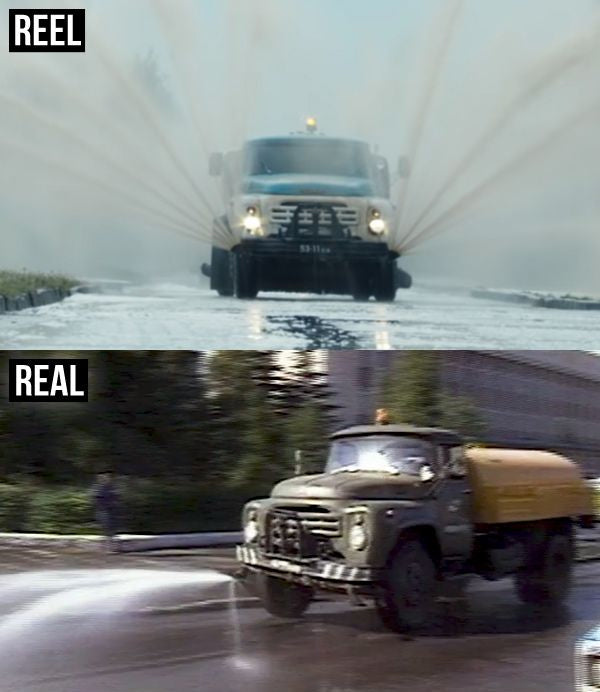Congratulations you have finished the treasure hunt! Click here to add the Ukrainian souvenirs to your account!
Stories & Facts
Clue 1
A Brief History of Ukraine with Key Dates.
9th century - Founding of Kievan Rus, the first major Eastern Slavonic state.
11th century - Kievan Rus reaches its peak under Yaroslav the Wise (grand prince 1019-1054), with Kyiv becoming eastern Europe's chief political and cultural centre.
1237-40 - Mongols invade the Rus principalities, destroying many cities and ending Kievan Rus's power. The Tatars, as the Mongol invaders became known, establish the empire of the Golden Horde.
1772-1795 - Most of western Ukraine is absorbed into the Russian Empire through the partitions of Poland.
1917 - Central Rada council set up in Kyiv following collapse of Russian Empire.
1918 - Ukraine declares independence. Numerous rival governments vie for control for some or all of Ukraine during ensuing civil war.
1921 - Ukrainian Soviet Socialist Republic established when Russian Red Army conquers two-thirds of Ukraine. Western third becomes part of Poland.
1939 - Western Ukraine is annexed by the Soviet Union under the terms of the Nazi-Soviet Pact.
1941 - Ukraine suffers terrible wartime devastation as Nazis occupy the country until 1944.
1944 - Stalin deports 200,000 Crimean Tatars to Siberia and Central Asia following false accusations of collaboration with Nazi Germany.
1954 - In a surprise move, Soviet leader Nikita Khrushchev transfers the Crimean peninsula to Ukraine.
Armed resistance to Soviet rule ends with capture of last commander of Ukrainian Insurgent Army.
1991 - Ukraine declares independence following attempted coup in Moscow.
1990s - About 250,000 Crimean Tatars and their descendants return to Crimea following collapse of Soviet Union.
2013 November - Tens of thousands of protesters take to the streets to protest at the government's sudden decision to abandon plans to sign an association agreement with the EU, blaming Russian pressure.
2014 February - Security forces kill at least 77 protesters in Kyiv. President Yanukovych flees to Russia, opposition takes over.
2014 March - Russian forces annex Crimea, prompting biggest East-West showdown since Cold War. US and European Union impose ever-harsher sanctions on Russia.
2014 April - Pro-Russian armed groups seize parts of Donetsk and Luhansk regions on Russian border. Government launches military operation in response.
Below, the 'Tunnel of Love' where you have just visited with the train coming through.
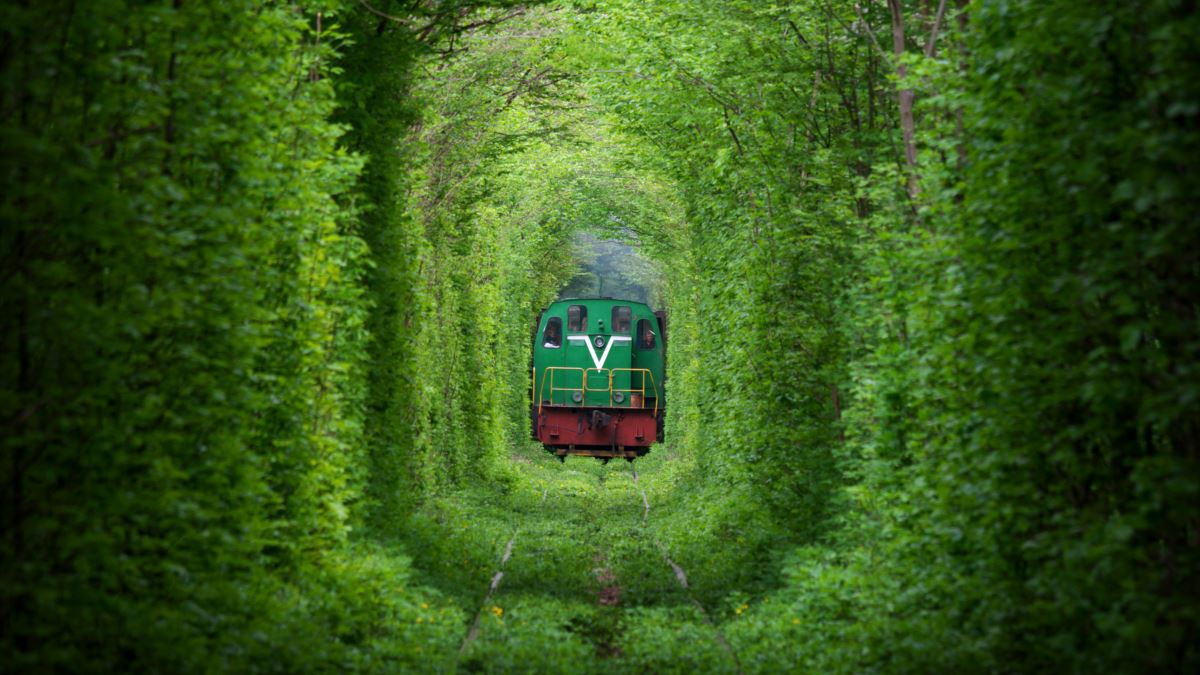
Clue 2
Kamianets-Podilskyi Castle is famous for being one of the seven wonders of Ukraine.
According to one legend, when Ottoman Sultan Osman II came to Kamianets in 1621 to capture the city, he was allegedly impressed by its strength and fortifications and asked "Who built this great city?" . Someone then replied to him, "God himself." When Osman could not capture the castle, he then replied "Then let God himself take the city."
Kaianets-Podilskyi Massacre
The Kamianets-Podilskyi massacre was a World War II mass shooting of Jews carried out in the opening stages of Operation Barbarossa (the Nazi invasion of Russia), by a German Police Battalion along with Ensatzgruppen (Nazi SS mobile killing units), Hungarian soldiers, and the Ukrainian Auxiliary Police. The killings were conducted on August 27 & 28th 1941, in the city which was occupied by Germany troops in the previous month on July 11th 1941. According to the Nazi German reports a total of 23,600 Jews were murdered, including 16,000 who had earlier been expelled from Hungary.
Below twice a year there is a hot air balloon festival which takes place at the Kamianets-Podilskyi castle.

Clue 3
Are Chicken Kiev's from Kiev?
There are many stories surrounding the origin of the birth of the chicken Kiev however the most popular is that the recipe originated in France and was brought back to Ukraine. In the late 1840’s rich people from Russia sent their chefs to France to master French cooking techniques and bring recipes of the best chefs to Russia. It is thought the recipe for the Ukrainian recipe of Chicken Kiev that we know today was invented in the restaurant of Continental hotel in Kiev in 1918 where it was the signature dish of the hotel's restaurant. We can only assume that it originated from “côtelette de volaille” a purely French term, which literally means chicken cutlet.
The Motherland Monument
Final plans for the statue were made in 1978, with construction 1979 - 1981. It was controversial, many criticised the costs involved and claimed the funds could have been better spent elsewhere. At 62m tall the statue is over a 100m shorter than the tallest statue in the world (India's Statue of Unity - 182m).
In modern-day Kyiv, the statue remains controversial, with some claiming it should be pulled down and its metal used for more functional purposes. Financial shortages mean that the flame, which uses up to 400 m3 (14,000 cu ft) of gas per hour, can only burn on the biggest national holidays, and rumours persist that the statue is built on unstable foundations, something strongly denied by the Kyiv local government.
In April 2015, the parliament of Ukraine outlawed Soviet and Communist symbols, street names and monuments, in a decommunisation attempt. But WW2 monuments are excluded from these laws. It was stated in February 2018 that the state emblem of the Soviet Union on the shield of the monument should be removed according to the decommunisation laws. To date however, it has still not been removed.
2014 Ukrainian Revolution
Successive Ukrainian governments in the 2000s sought a closer relationship with the EU.
The government of President Yanukovych had been negotiating an association agreement with the EU since 2012.
Such comprehensive trade agreement with the EU would have impacted Ukraine's trade agreements with Russia, the latter being Ukraine's biggest trade partner at the time.
Yanukovych believed that the complications could be addressed, and he said that he intended to enter the agreement, but continued to postpone.
This was interpreted as an attempt to back out of signing this agreement, and led to a wave of protests which came to be known as the "Euromaiden" movement.
Clashes between the protesters and the riot police became violent, and resulted in deaths of nearly 130 people, including 18 police officers. As the tensions rose, the personal safety for the president became untenable; on 22 February he fled from Kiev to Russia.The protesters proceeded to take control of the government. On the same day, the parliament declared that Yanukovych was relieved of duty in a 328-to-0 vote.
Yanukovych said that this vote was illegal and possibly coerced, and asked Russian Federation for assistance.
Russia considered the overthrow of Yanukovych to be an illegal coup, and did not recognise the interim government that was put in place by the protesters.
Widespread protests against the revolution occurred in the eastern and southern regions of Ukraine, where Yanukovych received strong support in the 2010 presidential election.
These protests escalated into 2014 Crimean status referendum, Russian military intervention, and the establishment of de facto independent states in Donetsk and Luhansk.
Below - the aftermath of the revolution in Independence Square.

Clue 4
Crimea and Russia
1783 - Crimea became part of the Russian Empire.
1954 - The Crimean Oblast (region) was transferred from Soviet Russia to the Soviet Ukraine.
2014 - Crimea was annexed by Russia after the Ukrainian Revolution, one of the motives is thought to be so Russia keeps hold of their Black Sea naval port in Sevastopol giving them naval access to the Mediterranean Sea.
The Crimea War 1853 - 1856
This conflict was fought between Russia and Britain, France & the Ottoman Empire over the rights of Christian minorities in the Holy Land of the middle east (which was part of the Ottoman Empire) in which Russia lost. There are several things it is remembered for:
Florence Nightingale
The popular Victorian nurse and social reformer came to prominence while serving as a manager and trainer of nurses during the war. She gave nursing a favourable reputation and became an icon of Victorian culture, especially in the persona of "The Lady with the Lamp" making rounds of wounded soldiers at night.
The Origins of the Balaclava
The name for the form of head gear comes from their use at the Battle of Balaclava during the Crimean War of 1854 (close to where the sub base is located) where British troops there wore knitted headgear to keep warm. Handmade balaclavas were sent over to the troops to help protect them from the bitter cold weather. British troops required this aid, as their own supplies (warm clothing, weatherproof quarters, and food) never arrived in time.
The Charge of the Light Brigade
This famous failed military action occurred when the Light Brigade was sent to prevent the Russians from removing captured guns from overrun Turkish positions, a task for which the light cavalry were well-suited. However, there was miscommunication in the chain of command, and the Light Brigade was instead sent on a frontal assault against a different artillery battery, one well-prepared with excellent fields of defensive fire. The Light Brigade reached the battery under withering direct fire and scattered some of the gunners, but they were forced to retreat immediately, and the assault ended with very high British casualties and no decisive gains.
The valour of the cavalry in bravely carrying out their orders, regardless of the nearly inevitable outcome is captured in the poem "The Charge of the Light Brigade"
Swallow's Nest Castle
This site was originally a wooden cottage named the 'Castle of Love built for a Russian general in 1895. In 1912 this was replaced with the current stone castle, today it is a tourist attraction and a symbol of the southern coast of Crimea.
Below - a knitted balaclava from the Crimean War.
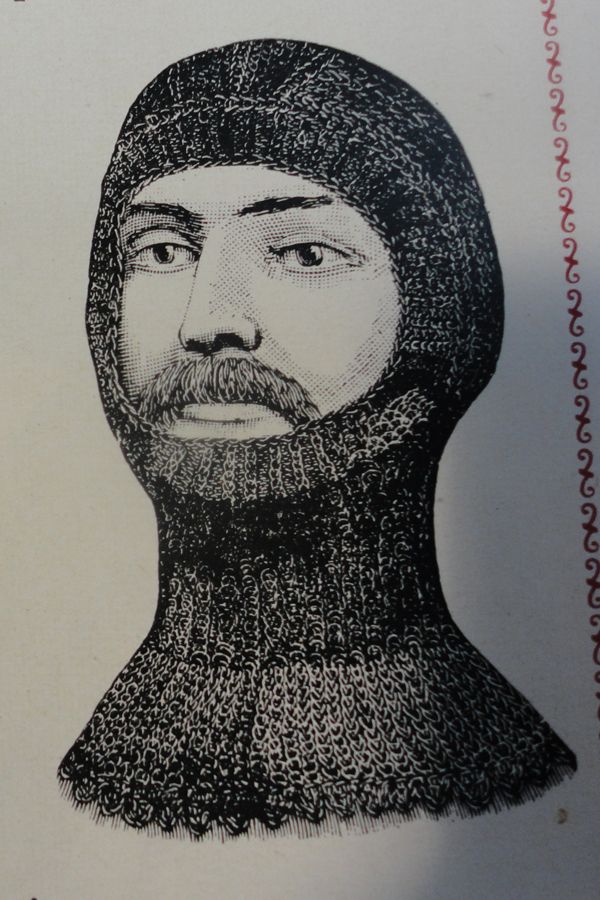
Clue 5
Donetsk Peoples Republic Flag
The flag claims to be based on the flag of Donetsk-Krivoy Rog Soviet Republic (a self-declared Soviet Republic founded on 12 February 1918). The black is commonly thought to represent the Black Sea or the coal industry in the Donbass region. The red is thought to represent freedom and the blue is thought to represent water.
Saur-Mogila War Memorial
This memorial sits atop a burial mound which is on top of a broad, rounded cliff encircled by the bronzed steppe (a large area of flat unforested grassland in south-eastern Europe or Siberia.).
It covers the bones of Soviet soldiers killed during the Second World War. More than 23,000 died fighting the Germans for this hilltop along the eastern edge of Ukraine, then part of the Soviet Union. It was part of the Mius Front, an imposing system of fortifications that successfully warded off Soviet counteroffensives
Saur-Mogila and the War in Donbass
Like the Germans and Soviets seven decades before them, Ukrainian forces and their separatist foes have brought their war to Saur-Mogila. The pro-Russian rebels have re-excavated the very same trenches that protected the hill in 1943.
July 2014 - the separatists broke holes into the granite obelisk itself, huddling inside to protect themselves from the intense bombardment.
On a single day that July, more than 600 shells and rockets rained down on Saur-Mogila. For several weeks, the statue of the gun-waving soldier stood spattered with shrapnel. Artillery and airstrikes ultimately reduced it to a pile of iron scrap that you saw today.
Malaysia Airlines Flight MH17
Malaysia Airlines Flight 17—reportedly struck by a surface-to-air missile fired by separatists was shot down near this spot in July 2014 killing all aboard.
It is thought it was shot down by mistake - Immediately after contact with the aircraft was lost, the rebel militia in Donetsk claimed to have shot down a Ukrainian An-26 military transporter. When it became apparent that the wreckage that fell near Hrabove was from a civilian airliner, the separatists withdrew this claim and denied shooting down any aircraft.
Below - the war memorial before and after the battles. Click here to see a short video reporting the shelling of the memorial.

Clue 6
Duga Radio
This radio system was used as part of the Soviet missile defense early warning radar network. The system operated from July 1976 to December 1989. Two operational Duga radars were deployed, one here in Chernobyl and the other in eastern Russia Siberia.
'The Russian Woodpecker'
At some point in 1976, a new and powerful radio signal was detected simultaneously worldwide. They appeared without warning, sounding like a sharp, repetitive tapping noise at 10 Hz repetition rate, which led to it being nicknamed by shortwave listeners 'the Woodpecker' by amateur radio operators.
The signal became such a nuisance that some receivers used on amateur radio and television, such as the Datong Model SRB2 Auto Woodpecker Blanker, began including 'Woodpecker Blankers' in their circuit designs in an effort to filter out the interference.
Furthermore to combat this interference, amateur radio operators attempted to jam the signal by transmitting synchronised unmodulated continuous wave signals at the same pulse rate as the offending signal. They formed a club called The Russian Woodpecker Hunting Club. Core group members would frame the "Official Practice Target" in their radio shacks.
Below - an overview of the Duga Radar station
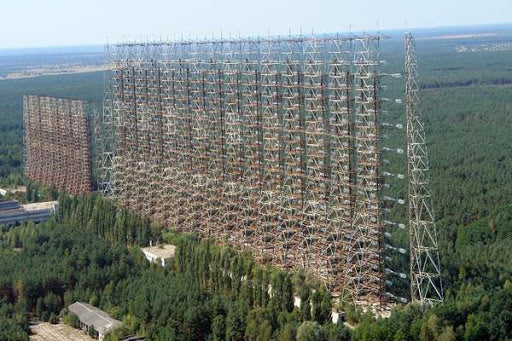
Clue 7
Chernobyl Nuclear Disaster
The Soviet Union attempted a cover-up of the disaster.
In the immediate aftermath of Chernobyl's reactor's meltdown, the Soviet authorities largely kept their own citizens in the dark and did not attempt to alert neighbouring countries.
On April 28, 1986, the cover-up began falling apart when Swedish air monitors detected large amounts of radiation in the atmosphere that seemed to have originated in the USSR. When pressed for an answer to the radiation, the Soviets admitted that an accident had killed two people at Chernobyl. However, they also lied that the situation was now under control. It took until May 6 for the authorities to close schools in Kiev – the Ukrainian capital – and to warn residents to stay inside.
The full story of what happened would not come out until years later.
The level of radiation was similar to Hiroshima.
Those exposed to radiation when Chernobyl's reactor exploded are believed to have received about 45 rem of radiation dosage on average; 45 is similar to the average dose received by survivors after the atomic bomb was dropped on Hiroshima in 1945.
Below - a picture showing the aftermath of the explosion.
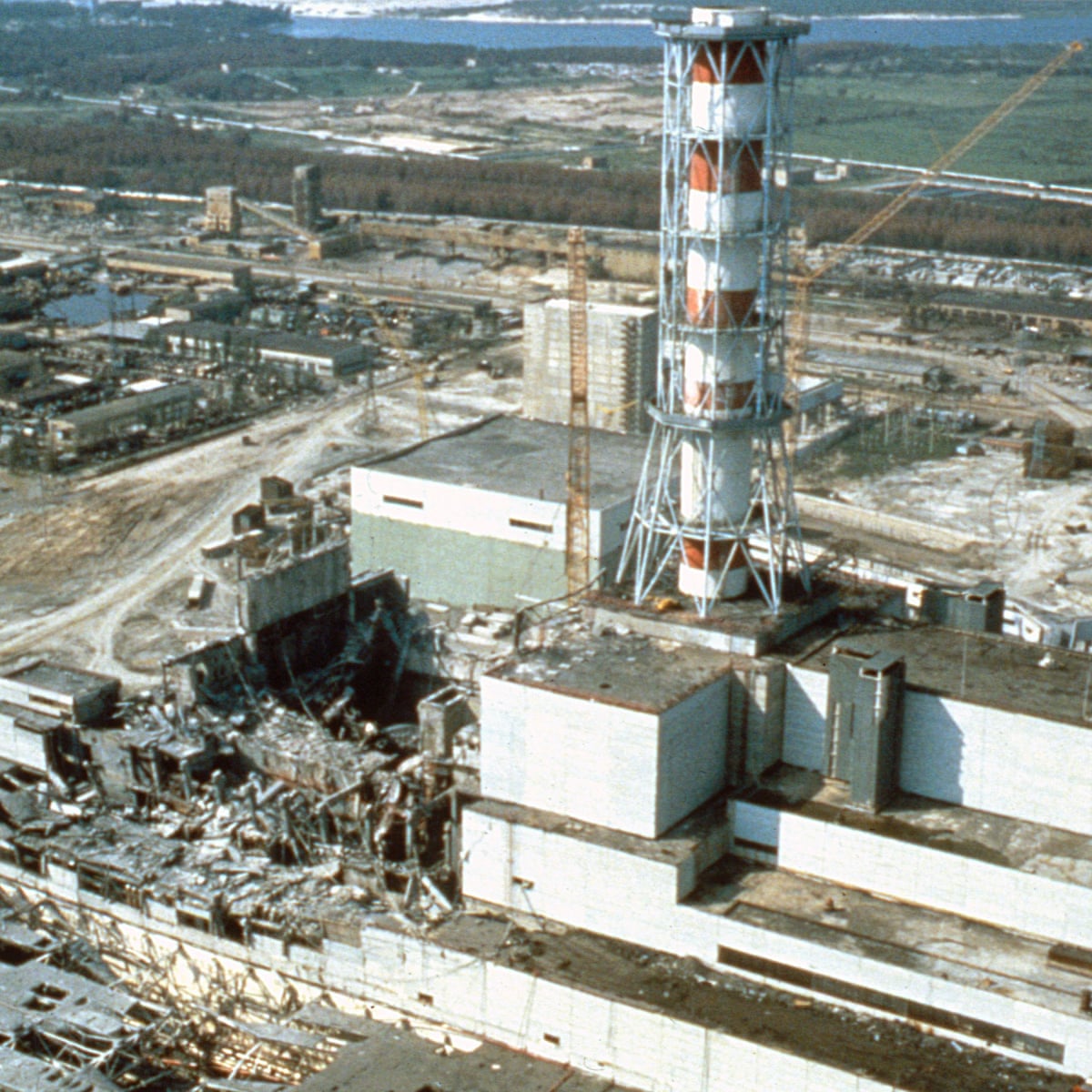
Clue 8
The Evacuation of Pripyat
April 27 14:00 (one day after the disaster) Evacuation of Pripyat begins.
Residents were given two hours to gather their belongings. The evacuation of Pripyat’s 43,000 residents took 3.5 hours, using 1,200 buses from Kiev. Residents remember that everyone was in a hurry, but nobody was panicking. The residents of Pripyat were asked to carry with them only what was required for two or three days, some food, a change of underwear, and their identity papers.
Of those who tried to return later, having realised that Pripyat was lost forever, to fetch belongings of affection, some succeeded but many more encountered alarm wired buildings and armed military.
The buses unwittingly brought levels of radiation back to Kiev causing further problems.
Below - a photo showing trucks disinfecting Pripyat in reality and in the 2019 TV series.
